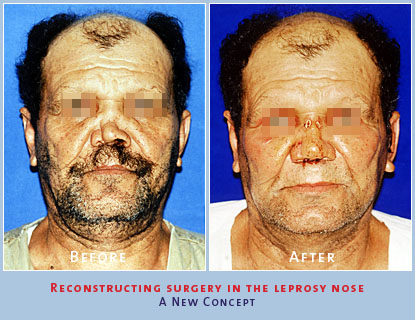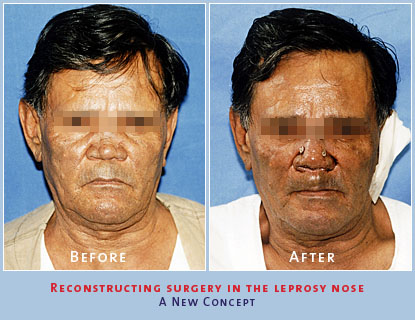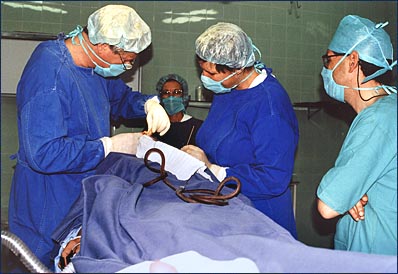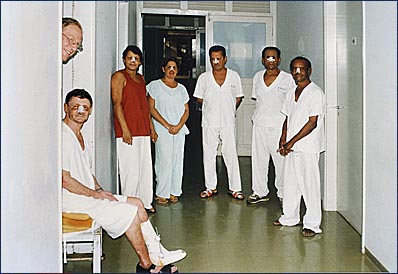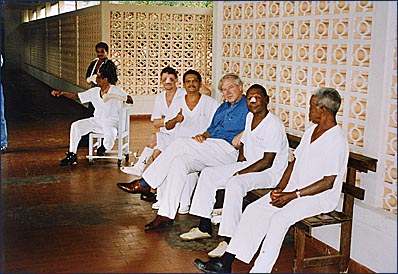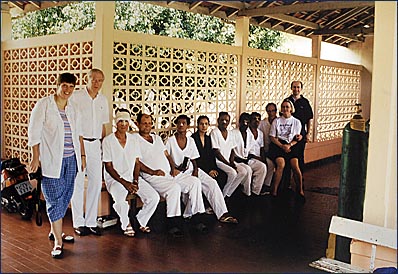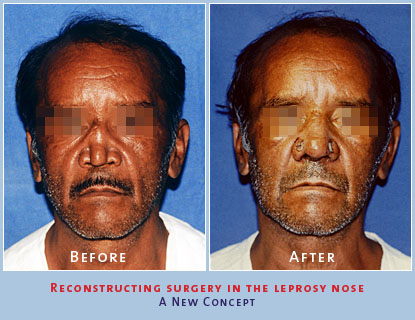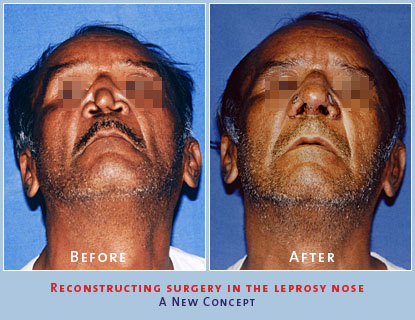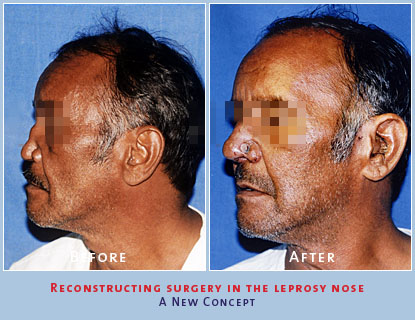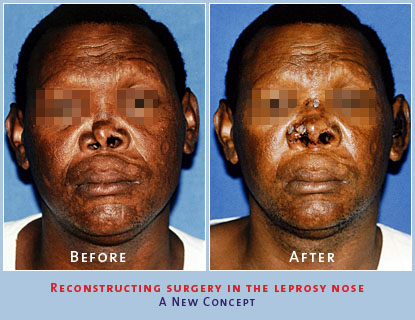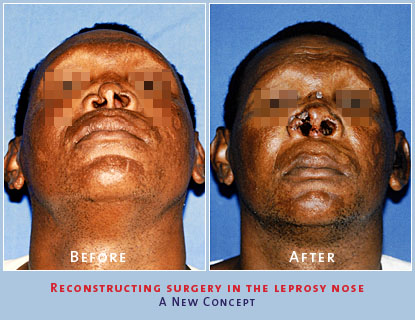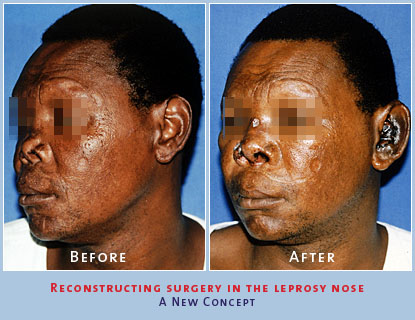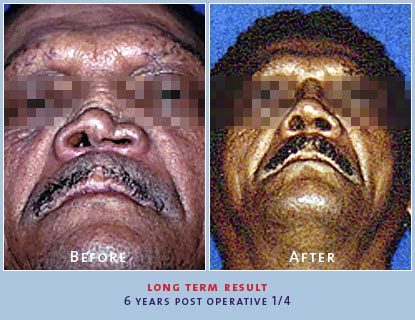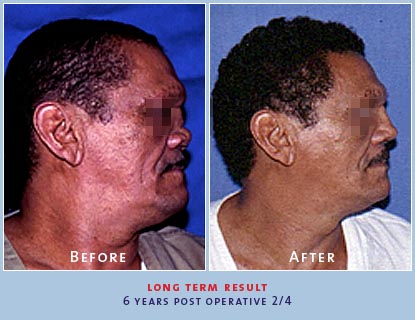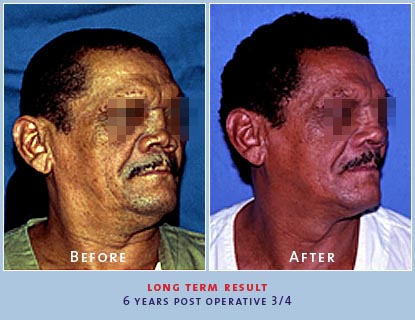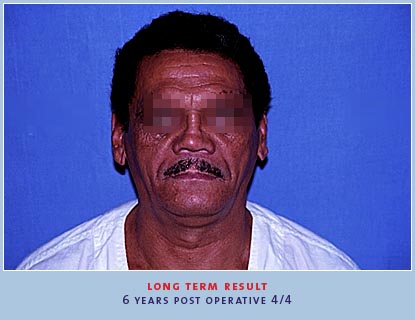Special Projects
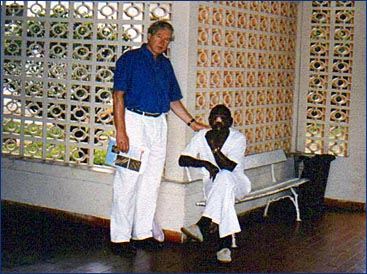
Reconstructing surgery in the leprosy nose | a new approach
There has still been no reduction in the detection rate worldwide for leprosy, despite supervised multi-drug therapy. In time, leprosy can result in a severe saddle-nose deformity leading to functional problems, disfiguration and stigmatization. In severe cases, only the nasal skin tissue and the lower lateral cartilages are preserved. In such cases, the ideal would be to restore the cartilaginous skeleton but, by contrast with other causes of saddle-nose deformities, this is complicated by the quantity and the poor quality of the remaining nasal mucosa. Leprosy-related saddle-nose deformities are therefore challenging and difficult to reconstruct with the techniques that have been proposed in the past.
In this study, 24 patients underwent rhinoplastic surgery involving the use of autogenous costal and/or auricular cartilage or composite grafts. The nasal septum, the upper laterals and the anterior nasal spine were reconstructed with a dorsal onlay attached to a columellar strut with an extension on the proximal side. Before surgery, the saddle-nose deformities were classified according to severity with a new system based on clinical symptoms and signs. Postoperative evaluation was performed at least two years after surgery (N=17). Functional and aesthetic improvement, resorption rate, warping, infection and extrusion were analysed. Functional and aesthetic improvements were achieved in 15/17 patients. None of the patients developed an infection and extrusion or warping of the implants was not observed.
The resorption rate depended on the localization and the type of cartilage implant. In general, auricular conchal cartilage implant grafts resulted in less resorption than costal cartilage. Least resorption (4/17 patients) was observed in the dorsal onlay grafts of both conchal (1/6) and costal cartilage grafts (3/11). Resorption of columellar strut implants and shield grafts was observed in 7/17 patients. No resorption was seen of composite grafts (0/4) and alar battens (0/7). Autogenous cartilage implants can be used to reconstruct saddle-nose deformities in leprosy with a minimum risk of complications. The preoperative grade of severity was used as a basis for the development of guidelines for optimal long-term functional and aesthetic outcome.
Department of Otorhinolaryngology/Head and Neck Surgery, Center for Facial Plastic and Reconstructive Surgery, Academic Medical Center, Meibergdreef 9, 1105 AZ Amsterdam, The Netherlands. Menger DJ, Fokkens WJ, Lohuis PJ, Ingels KJ, Nolst Trenite GJ.
Previously published in NCBI PubMed.
Patient Gallery
